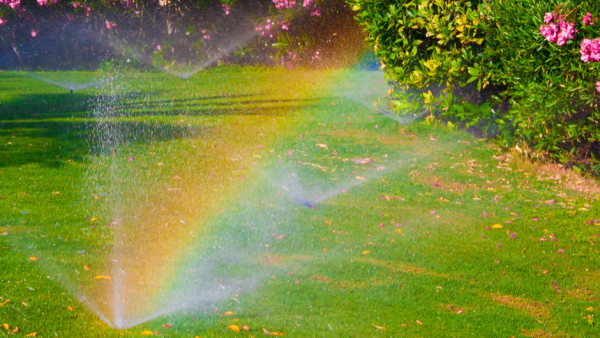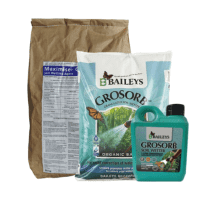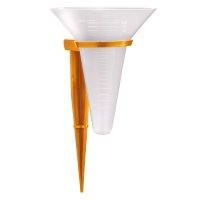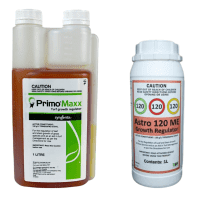Akers Monthly – November 2023

Getting Summer Ready!
The sun is shining, the grass is growing, and summer is on our doorstep!
Here we will answer some FAQs about watering and summer essentials to get you and your lawn ready for the heat that the summer season brings!
Watering
Watering between seasons can be tricky!
If you haven’t already started watering your lawn it is time to get your sprinkler systems and hoses going. Give your lawn a deep soak once or twice a week (weather dependent) to encourage deeper root growth and stronger lawns coming into Summer!
Watering FAQs
How do I know if my lawn is getting enough water?
This is unfortunately not a one answer question, as it is dependent on multiple factors including:
- Irrigation type; pop ups, subsurface, or a sprinkler
- Soil type
- Lawn variety (Lawns such as Kentucky Bluegrass, Fescue and shady lawns tend to need more water than others)
- Overall lawn health
- Weather and environmental factors
However, if your lawn is doing any of the follow, it needs watering:
- Discolouring to a grey and/or brown
- Dry/crunching/squashing underfoot rather than bouncing back
To help ensure your lawn is getting enough water we recommend overhead watering, as this is a much easier method for providing an even soaking of your lawn. Hand-watering is not ideal as it is a lot harder to deliver an even and deep enough coverage.
I have subsurface irrigation – how should I water, and how do I know if I’m watering enough?
When using subsurface we recommend doing deep, infrequent waters (i.e., watering every third day for 1 hour). This method supports deeper root growth for a resilient lawn, ensures that the root zone gets sufficient moisture, even if it’s less visible from the surface, and is a more cost-effective method of watering long term.
To determine the right amount of water: aim to wet the soil to a depth of about 15-20 cm. This will generally be a longer watering period compared to other overhead watering methods.
Testing: About an hour after watering, use a probe, screwdriver, or even a long stick to test the moisture level. It should penetrate easily through moist soil and become difficult to push when reaching dry soil. Aim for the probe to be smooth to at least 15cm deep. Be careful of the system lines and avoid puncturing any of them. A good investment would be a soil moisture meter as it can give you a relatively accurate reading of how moist the soil is at the probed depth.
Frequency: Aim for 2-3 times a week, adjusting based on observed lawn health and seasonal weather changes.
Weather Considerations: Reduce or skip watering sessions after significant rainfalls. During peak summer where the frequency might increase, ensure watering remains deep.
How much do I need to water?
We recommend giving your lawn, gardens, and plants long, slow soaking applications rather than light regular sprays. Lawn ideally needs between 1½ – 2 inches of water once or twice each week, depending on the weather, your turf type, and its health condition. Lawns such as Kentucky Blue, Fescue and shady lawns may need more water than others.
To test how long to leave your sprinklers on, place a catch cup on the lawn, see further down for directions.
Does my lawn still need to be watered if it has rained?
It depends! Although we may be getting some rain through spring, do not rely on it. Small amounts of rain don’t actually deliver enough water to the soil and root system, leaving the bulk of your lawn dry, despite the top of the leaf looking wet.
We recommend keeping an eye on how much rain is making it through to the soil and root system. To track how much rain falls in the garden you can use a rain gauge. Alternatively, we recommend to check if your soil is getting enough water by using a meter, by digging down into it, or by using a catch cup to measure how much water the rain or sprinklers are supplying.
When is the best time to water my lawns?
We recommend watering your lawn in the early morning or late afternoon/early evenings. It is ideal to avoid the middle of the day, especially during summer, as the heat can cause the water to evaporate and not reach the reach the soil/root system. It is also important to not water too late in the evening/night as the water will not have the chance to dry, and resting water can lead to fungal diseases developing.
Water is pooling in different areas of my grass, why?
Your soil may be water repellent! Water repellent or hydrophobic soils have a difficult time keeping water in the soil where it can be utilised by the lawn’s roots.
If soil is particularly sandy then water can struggle to be absorbed and stay in the soil zone where roots can use it. This can be fixed with a wetting agent, which we will be discussing further down in this newsletter.
If soil is particularly clay-based water can end up pooling on top and can cause fungal problems if left untreated. We highly recommend coring your lawn to open up the soil, allowing water, oxygen and nutrients in, and encouraging deeper root zones. In addition, an application of gypsum will help break up the clay soil, allowing water and roots to penetrate deeper and without resistance.
Summer Essentials
Prepare yourself and stock up ready for December and the summer heat to come.
Sprinklers

Orbit 8 Pattern Turret Sprinkler
Versatile and easy to move, making it perfect for giving your lawns and gardens the water they need.
- Ideal for medium lawn areas
- Great for odd shaped yards
- 8 spray patterns
- Durable high impact construction
- Available in black

Orbit Max Oscillating Sprinkler
Maximizes water coverage for medium to large rectangular areas. It delivers a gentle, even rain-like shower (perfect for flowers, shrubs and lawns).
- Up to 370sqm coverage
- Up to 30% greater flow compared to standard products
- State-of-the-art gear driven motor is built to last
- Heavy duty metal construction and wide base design reduces tipping
- 19 precise flow nozzles provide even water coverage
Start saving water today with Orbit Sprinkler Catch Cups! One of the great mysteries of sprinkler systems is how to program your timer so you don’t waste water. Making sure you use just the right amount of water, or conducting an irrigation audit, leads to maximum sprinkler efficiency, and that’s where Sprinkler Catch Cups come in.
Tips for use:
- Make sure the lawn area around each sprinkler has been mowed prior so there is no growth preventing the spray of the sprinkler from evenly dispersing
- Place the catch cups at least 60cm away from the sprinkler head
- Avoid doing this on a windy day and only run one line at a time. Best done when no other water is running
- Each sprinkler head spray should reach the sprinkler next to it where possible for full coverage, adjust sprinkler heads as necessary for even spray of water
- Run your sprinkler and time how long it takes to fill to the top past the 200mm mark up to the the circle. The time will vary according to sprinkler type and water pressure.
However long the last step takes this is 1/2 the recommended time to give your lawn the correct amount of water for one deep water!
Finer grasses such as Kentucky Bluegrass, Shady Blend, or RTF may need 2-3 times a week. Couch or Kikuyu during grow season needs minimum one water. This is pending weather conditions, extra watering may be needed in extreme conditions such as if it has not rained or there is a heatwave.

Soil wetting agents are important for helping water stay in the soil, which helps lawns stay greener for longer during the heat of summer. Some soils, particularly sandy based soils, can become hydrophobic, making a soil wetter vital to ensuring lawns and plants are able to absorb the water we provide them.
Soil treated with a soil wetter will be able to absorb and hold water better, promoting even water coverage and better uptake of nutrients provided by fertilising. Soil wetters should be applied early spring, early summer, or autumn.
We recommend applying a product such as Baileys Grosorb, available in a concentrate, hose-on, or granular, a couple of days before fertilising.
Plant growth regulators (PGR) suppress the vertical growth of grass, and instead promote lateral growth and root development. They improve turf colour, uniformity, and health to provide a smooth, tightly knit cover that is better able to withstand stress. They are a key piece to obtaining a strong, easy-to-maintain lawn that has improved leaf blade health and durability.
Benefits:
- Reduced Mowing Frequency: PGRs decrease your mowing frequency by up to 50%, meaning less time, effort, and resources are expended on lawn maintenance.
- Enhanced Lawn Health: PGRs promote a denser, more vibrant lawn. The encouragement of lateral growth contributes to thicker turf that can effectively suppress weeds by outcompeting them for essential resources.
- Improved water and fertiliser efficiency: PGRs boost root growth and development which allows for better water and nutrient uptake. Perfect for eco-conscious homeowners.
Growth regulators are best applied through spring and summer, while your lawn is actively growing, and is not suitable for Kentucky Bluegrass. We recommend using Astro 120 ME or Primo Maxx to get your lawn looking its best.
Now Stocking
Lawnporn

We are now stocking majority of the highly sought after Lawnporn range.
Product of the Month!

Are you interested in our Organic Based Granular Fertiliser but only have a small lawn?
Then this is for you: Akers Organic Based Granular Fertiliser in a 5kg bag!
Our 5kg bag covers 100-120sqm.
It is a unique fertiliser established for all lawn types which is ideal for Australian conditions. With over 35 years’ experience in the industry, Akers of Lawn has built a reputation for outstanding service, knowledge and advice in the lawn industry. Using this knowledge and experience, in consultation with certified Agronomist Ryan Sheridan (M.Sc.Ag), we have developed our own unique blend aiming to maximise fertiliser efficiency and results. It is formulated using a unique organic coating, with added bio-stimulants and all essential nutrients, that will make your lawn flourish.
Dal’s Gardening Tips
- Remove all the dead heads off your roses, then fertilise.
- Feed bulbs as they will be beginning to die down, this helps build bulbs for next year. However, once foliage has died down, lift bulbs and store in a cool, dry place until next season.
- Now is a good time to plant vegetables such as capsicum, celery, cucumber, eggplant, herbs, parsnip, squash, sweet corn, and zucchini to name a few.
- Trees, shrubs and climbers of all kinds can be planted now.
- Cut back unwanted growth on jasmine to keep rampant growth under control.
- Lightly prune flowering native shrubs, making sure to only cut behind spent flower heads.
- Now is great time to Mulch around plants. Make sure to add Soil Builder to the ground prior to add organic matter, assist with soil health and to retain moisture in the soil ready for the warmer days.
Do you have any lawn or garden questions?
We want to hear from you!
Send us any questions or topics you want covered and they may get featured in our next Akers Monthly!
As always, thank you for your support!
Best wishes,
Dal, Jacqi and the Akers of Lawn team


